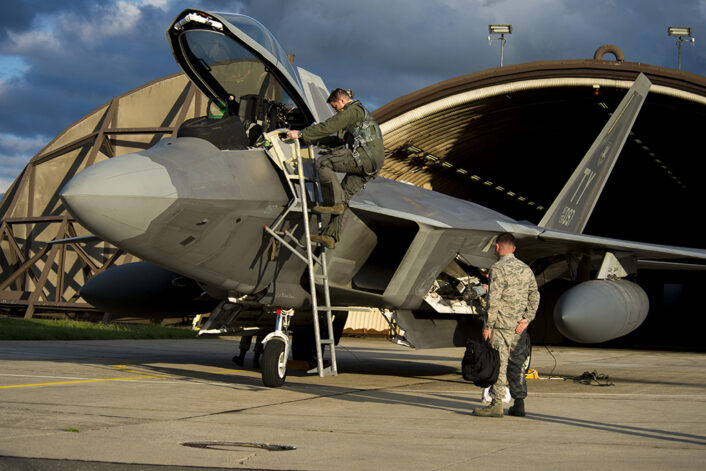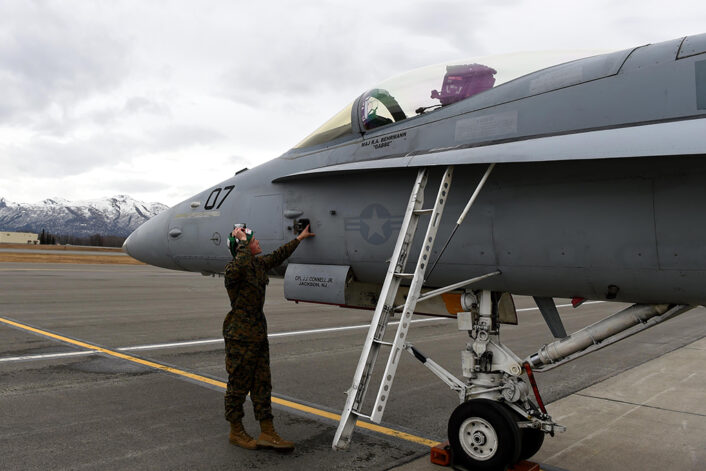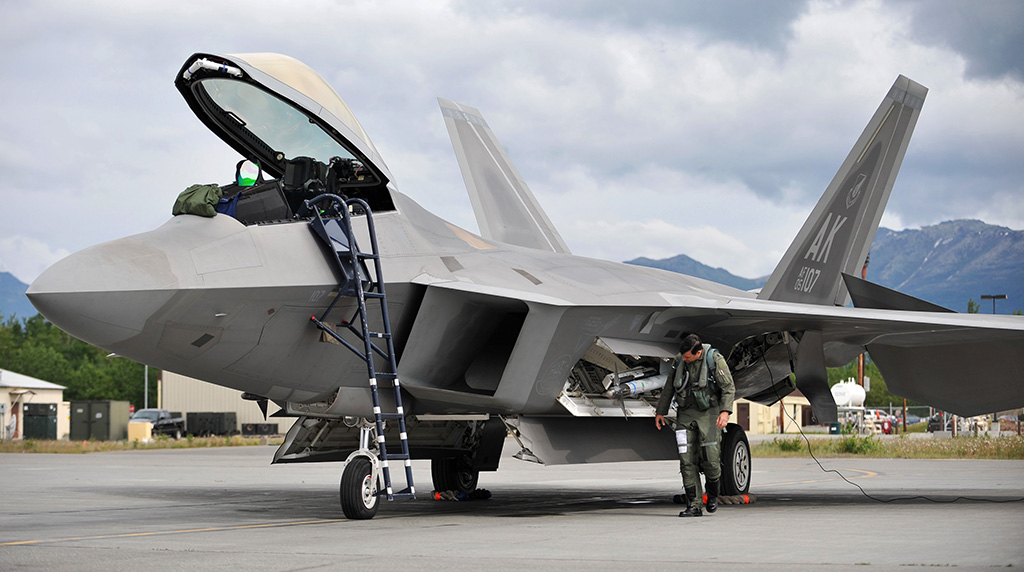The U.S. Air Force is constantly looking for new ways to rapidly deploy critical assets across the globe and minimizing the equipment footprint is among them.
For instance, during a recent agile combat training that involved five Air National Guard wings along with F-22 Raptor, KC-135 Stratotanker, C-17 Globemaster III and other strategic bomber aircraft, the 149th Fighter Squadron tested a pretty interesting modification to the Raptor: a new integral ladder.
“We’re testing a new ladder that collapses and stows inside the F-22 cockpit,” Lt. Col. Lawrence Dietrich, 149th Fighter Squadron commander and exercise commander and F-22 instructor pilot. “This reduces forward staging requirement of equipment and people for ingress and egress of the cockpit to zero.”
In fact, one of goals of Operation Hoodoo Sea was to test and validate minimum force elements using multi-capable Airmen, making it possible to scale down a deployment by over 90% of the typical personnel and equipment footprint.

U.S. Navy fighters have integral ladders because they are designed to operate aboard an aircraft carrier, where there would no much space for many external ladders. Same is for aircraft designed to operate out of dispersed airfields where availability of logistical support is limited. However, the F-22 was, at least initially, not supposed to operate from a forward operating location and for this reason it was not designed to be equipped with an integral ladder.

However, starting with the so-called Rapid Raptor Package dating back to 2013, the U.S. has started to work on a new rapid deployment concept that would allow the deployment of a small package of F-22s and supporting logistics to any forward operating base and have the stealth fighter jets ready for combat operations within 24 hours of deploying with a small logistics footprint. The concept has evolved into what is currently known as Agile Combat Employment (that has been extended to other types of aircraft), that envisions the use of agile operations to generate resilient airpower in a contested environment. This means dispersing forces across different or remote airports and support their operations with fewer specialists, to ensure that the U.S Air Forces in Europe are ready for potential contingencies by allowing forces to operate from locations with varying levels of capacity and support. The purpose is “to become more agile in our execution, more strategic in our deterrence, and more resilient in our capability. Agility, Deterrence, and Resiliency are essential to defense and operational capability in a contested environment,” the U.S. Air Force in Europe website says when explaining the ACE Concept of Operations. In this respect, an integral ladder on the F-22 can be extremely important.
The ANG has not disclosed any image of the new ladder, whose testing was carried out during the Virginia ANG-led Operation Hoodoo Sea along the southeast U.S. coast, whose purpose was “to test and validate minimum force elements using multi-capable Airmen executing functions across job specialties and multiple platforms.”
According to the official press release, each participating unit tested innovations in agile secure communications, portable aerospace ground equipment and aircraft concealment and survival kits.
Another goal of the drills was to see how the participating unit could integrate on different tasks in austere environments: “At the end of the exercise, if a KC-135 crew chief is taking a post-mission intelligence report from an F-22 pilot and disseminating threat location to a displaced, over-the-horizon bomber force, while a C-17 loadmaster is helping to execute a combat turn on an F-22, then we are exceeding our expectations for this exercise.”













